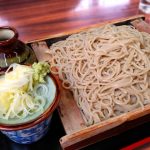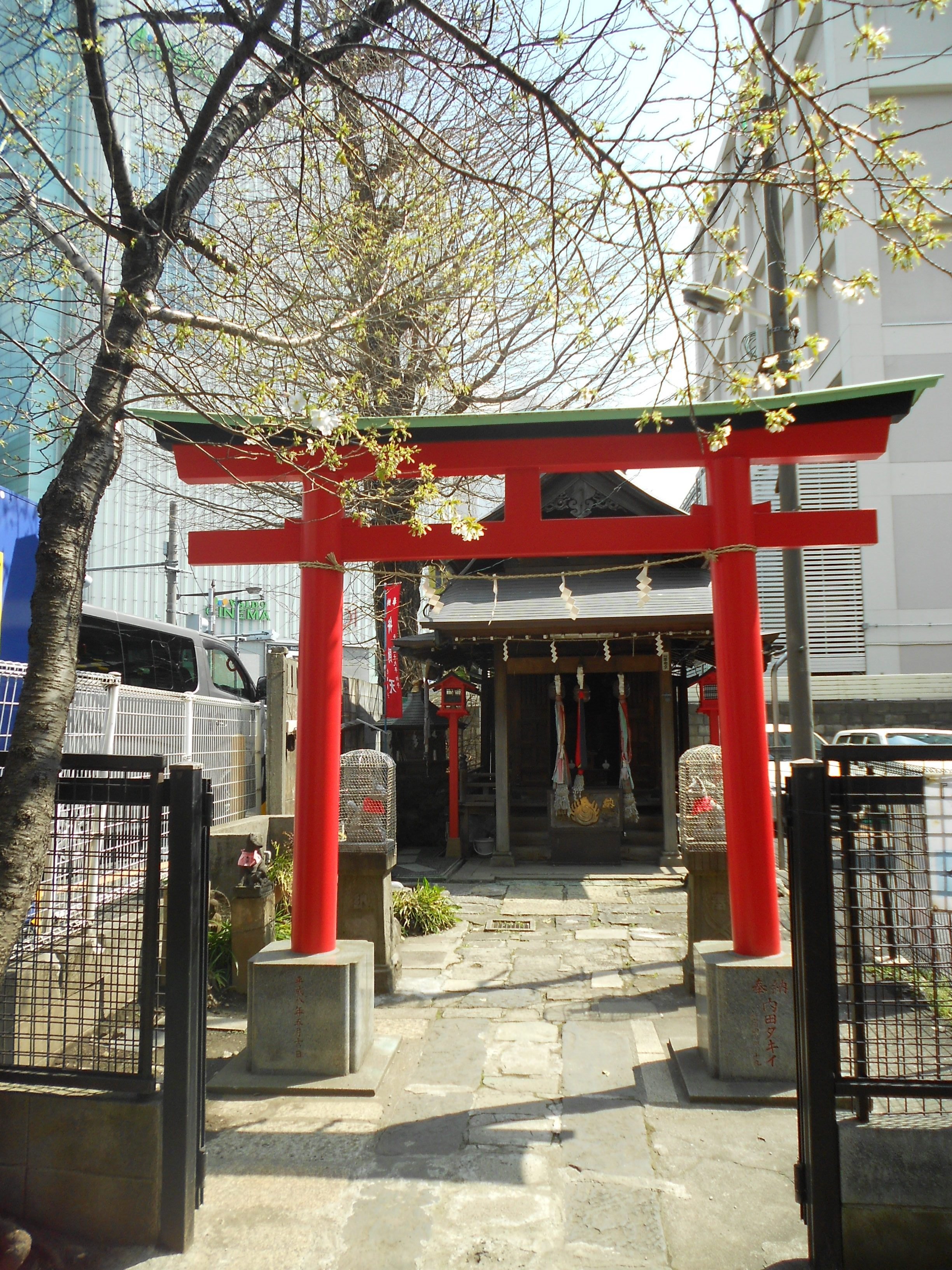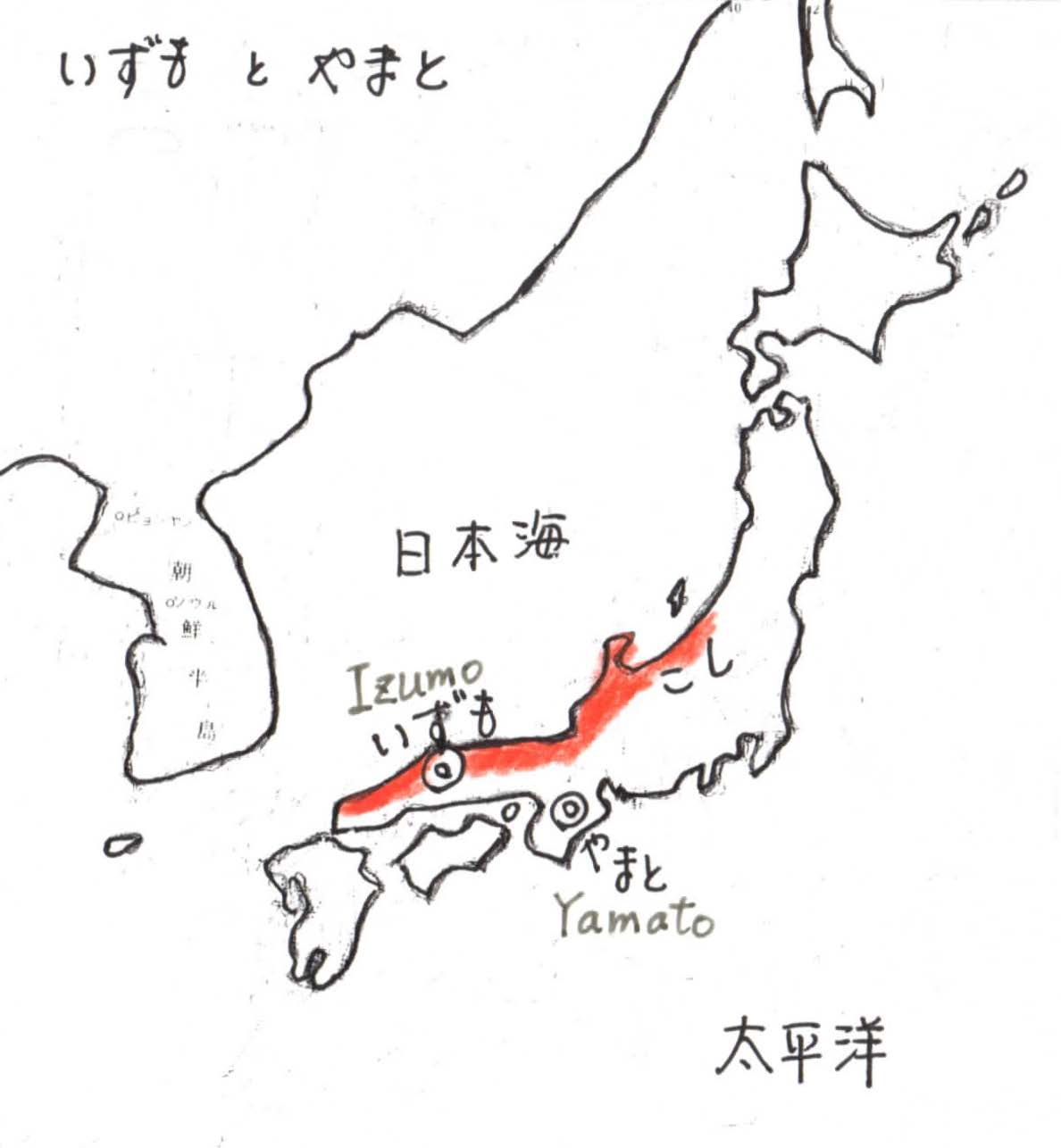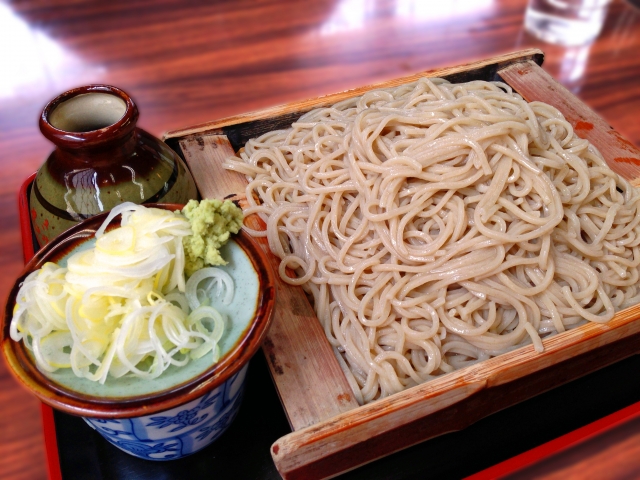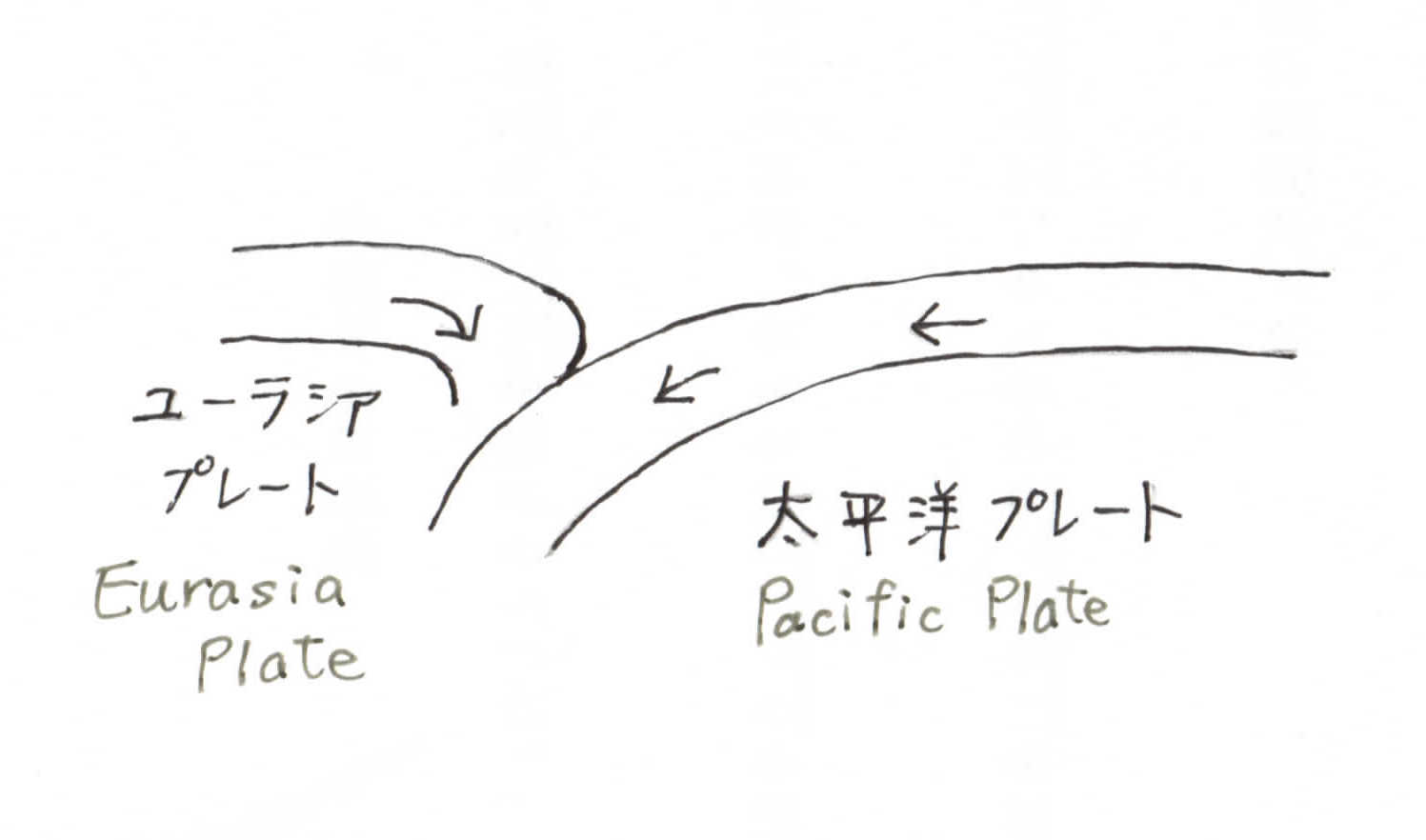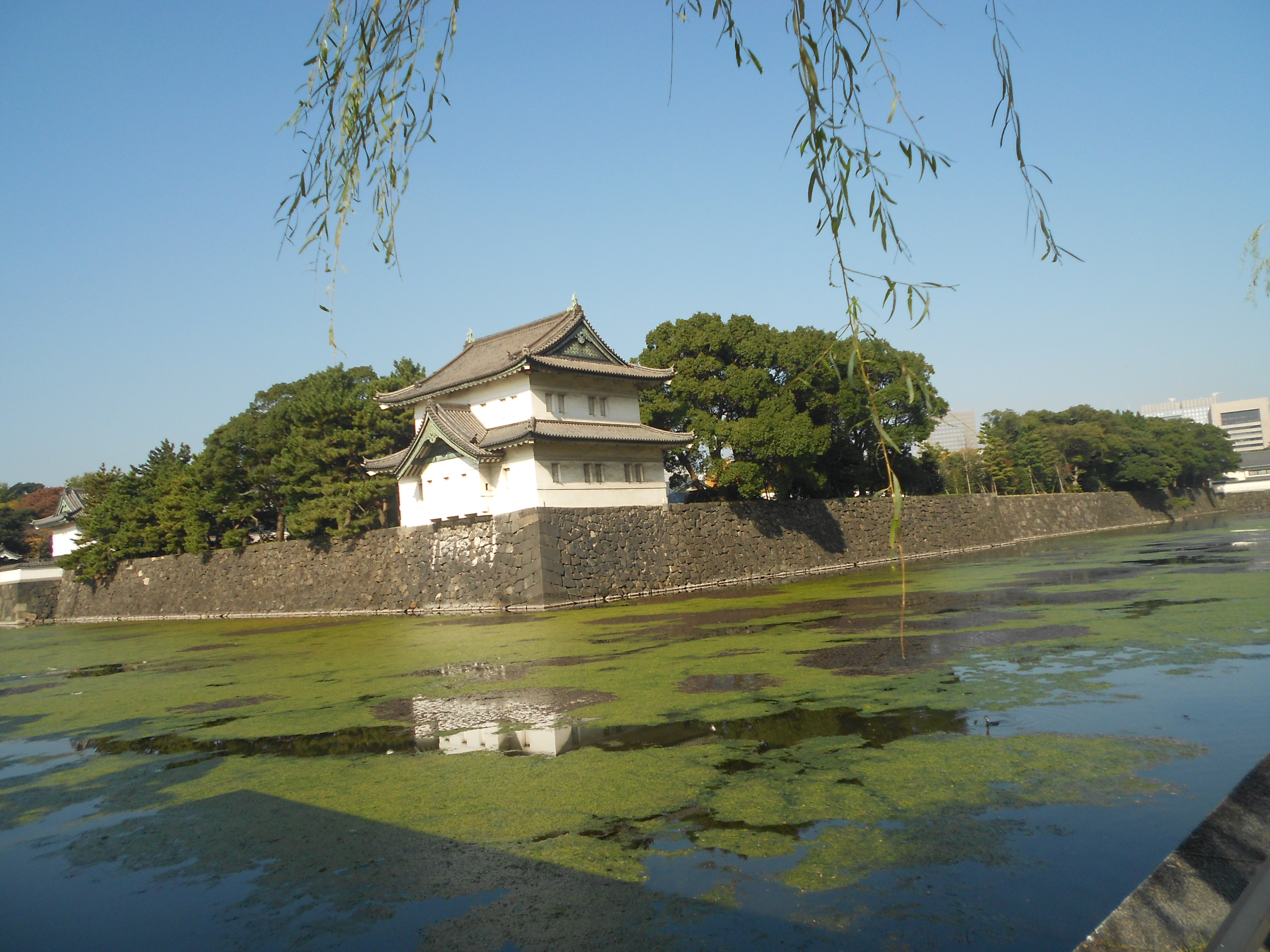I would like to try to explain, in a simple way, where the Japanese people came from.
Originally the ancestors of Mankind started to spread from eastern Africa about 70,000 years ago. The first people came to Japan about 20,000 years ago. After that there seems to have been four big “waves” of the people coming over to Japan.
☆1 The 1st wave : 20,000 years ago ~ 10,000 years ago
Mainly from the North
In the Glacial Age about 20,000 years ago, the sea level was about 120 meters lower than now, and the present Japanese Archipelago was connected to the Asian continent. The Seto Inland Sea was a dry valley at that time. (*1) Mammoth tusks were found in the Seto Inland Sea. Mainly Mongolian people walked from North Asia and Okhotsk area to Japan and lived on hunting and gathering.
☆2 2nd wave : 10,000 years ago ~ 3rd century BC ( Jomon Age )
Mainly from the South by sea
It gradually became warmer, the ice melted and the sea level rose. Around 6,500 years ago the sea level was much higher than the present level, and people could no longer walk from the continent. (*2 )
Around this time there were people from the Philippines, Indonesia, Polynesia, etc. in the South, arriving in the Japanese islands by small boats on “Kuroshio”, the Japan Ocean Current. They were seeking a new land.
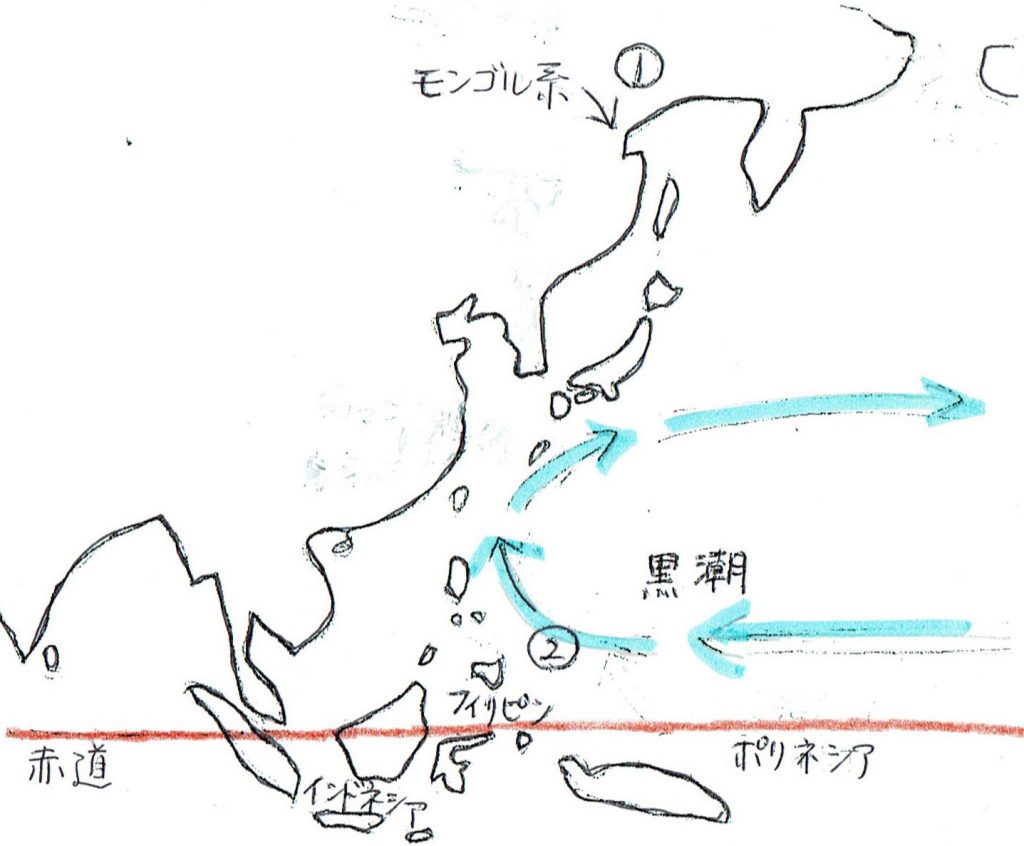
Much of present day Japanese cultures have their roots in the cultures of this period, for example :
(a) High-floor house
The way to build a high-floor house comes from hot and humid areas in the South. The climate of southern Japan is also hot and humid. So the main purpose of the house was to pass the wind beneath the floor and open the window as big as possible keeping a house cool.
There are still many high-floor houses (about 80 cm) in the countryside in Japan. When we ask guests to enter the house, we say “Please come up into the house”.
( “Irori”⦅fireplace⦆ in the house is the culture from the North.)
(b) Sound of Vowels
In the Japanese language each syllable has a vowel. Though Japanese grammar is from Northern languages like Mongolian and Korean, the syllables are from Southern languages.
For example, Hawaiian language (“Aloha, Kamehameha” etc.) and Indonesian language (“Terimakasi, Sama sama”, etc. ) have also many vowels.
(c) Motherhood
Strong matriarchal influences from the South. As there was no scary animals nor severe nature, there was no need for strong men. A mother who created a new life was considered to be mysterious and sacred. It was women who could listen to the voice of deities, especially in these southern cultures.
On the Okinawa islands there are still the customs of sacred shrine maidens called ”noro”.
(d) Nakedness
Nakedness was very natural as it was hot and humid by the sea. Sumo was played near the sea almost naked style so that they did not have to worry about getting wet in the sea.
This is very different point from Chinese and Korean culture. They don’t like naked style.
Sexual culture was also very natural and open like in Pacific islands.
☆3 3rd wave : 3rd century BC ~ 3rd century AD ( Yayoi Age )
Mainly from Southern China and the Korean Peninsula
In 221 year BC, Qin Emperor united China. Many people who were defeated in battles, were forced to choose whether to obey the new Emperor or to flee to some other land.
From the Yangtze River area, some Chinese people with rice cultivation technique fled to the east and came to southern Kyushu, Japan. Many Korean people too fled from the Korean Peninsula to the Japan Sea side of Japan.
For rice cultivation, rice planting and harvesting are collective activities. Every villager must do the same thing together .
This culture teaches that “It is a good thing for everyone to do the same.”
☆4 4th wave : 4 th century AD ~ 7 th century AD
Mainly from the Korean Peninsula
In the 4th century there were some big political movements in the Korean Peninsula, and the country of Kara (Kana), Baekje (百済), and Silla (新羅) were established.
The country of Yamato ( Nara, Japan ) had good relations with Kara and Baekje, got the peninsula route, and from these areas the flow of people to Japan increased.
In the latter half of the 5th century, the capital of Baekje was destroyed by Goguryeo (高句麗) , and in the 7th century Goguryeo and Baekje were defeated by Silla and Tang (唐). Many of the defeated people escaped to the Japanese islands with a new culture and technology.
Every time there were some wars on the continent, people flowed into the Japanese islands. But there were no more place to escape after Japan. Japan is at the east end of Asia.
In Japan people did not have any other choice. They could not live peacefully unless they got along with each other.
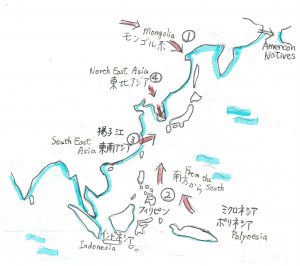
“Gradually” or “suddenly” people came to the Japanese islands from various places, mixed well together and the “Original Japanese people” were made.
☆5 Western Japan
From around the 4th century, with the help of people from Baekje the country of Yamato ( Nara) gradually increased its influence and succeeded to keep other smaller countries under control. A leader of Yamato became a “Tenno” (Emperor) and made the name of the whole country, “Japan”. (*3)
After this, in the 8th century, the history continued to make the capital in Nara in 710 and the capital in Kyoto in 794, as the recorded history.
☆6 Eastern Japan
After the government system of Western Japan (Nara, Kyoto) was established, the people who came later from the Korean Peninsula to Japan, were told to go to the east (Kanto area). There was a lot of land in eastern Japan. After they cultivated land with rice, they could own their land. To protect their own land, they fought with weapons. This was the beginning of “Samurai”. So Samurai was born in the eastern part of Japan.
From that time, two streams, the aristocratic culture in Kyoto in western Japan and the Samurai culture in eastern Japan, continued to the Edo period.
To sum up
☆ 1st wave : 20,000 years ago ~ 10,000 years ago From the North
Mongolian people from Northern Asia and the Okhotsk area, mainly to northern Japan.
☆ 2nd wave : 10,000 years ago ~ 3C BC From the South
People from the Philippines, Indonesia and Polynesia on the Kuroshio Ocean Current, came to southern Japan by boats. The roots of the present Japanese culture: high- floor houses, sound of vowels, motherhood, nakedness.
☆ 3rd wave : 3C BC ~ 3C AD From southern China
From the Yangtze River area and the Korean Peninsula, farmers mainly came to Kyushu and the Japan Sea side.
Formation of villages based on rice cultivation. “Collaboration is a good thing”
☆ 4th wave : 4C AD ~ 7C AD From the Korean Peninsula
Northeast Asian people came to Kyushu and western Japan.
They should not fight but get along well together as there were no more place to escape to.
――― (*) ———
*1 The Seto Inland Sea is 60~100 meters deep now.
The Sōya Strait ( between Hokkaido and Sakhalin) is about 60 meters deep and the Tsushima Strait (between Japan and the Korean Peninsula) is also about 100 meters deep, so during the Ice Age people could walk over to Japan. But the Tsugaru Strait ( between Honshu and Hokkaido) is 140 km deep so it was not connected.
By the way, the depth of Japan Sea is about 3700 m~4000 m, very deep.
*2 The sea level rose roughly 100 m for 10,000 years. It means that it rose about 1 cm in one year.
*3 See “ 2. Why is Japan called ‘Nippon’ in Japanese? ” and ” 15. Why is ‘Chugoku region’ called China?”

